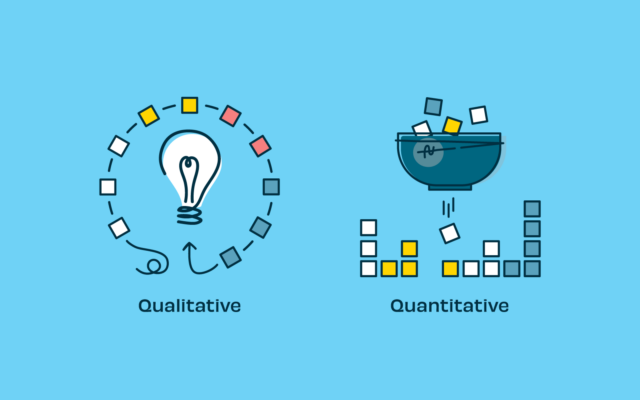
Market research is an integral part of product development, and it involves gathering information about customers, competitors, and the market. This information can help businesses make informed decisions and develop products that meet the needs of their target audience.
In 2024, the role of consumer research in product development is more critical than ever before. With constantly evolving customer demands, technological advancements, and trends, businesses need to stay up-to-date with the latest insights to stay ahead of the competition.
Qualitative Research
Qualitative research involves gathering non-numerical data through methods such as focus groups, in-depth interviews, and observational studies. This type of analysis is useful for gaining insights into customer opinions, attitudes, and behavior. Qualitative research done by a team of experts such as InventHelp can also help businesses understand the reasons behind customer behavior, which is essential in developing products that meet customer needs.
Quantitative Research

Quantitative research involves the collection of numerical data through various techniques, including surveys and experiments. This method provides valuable insights into customer behavior, preferences, and trends. By analyzing quantitative data, businesses can understand how customers interact with their products and services, and determine potential demand.
This kind of analysis also allows companies to estimate the market size, assess competition, and identify growth opportunities. Overall, this is a crucial tool for businesses to make informed decisions and develop effective strategies in today’s dynamic market.
Benefits of Market Research
Data analysis of current selling trends offers several benefits to businesses that are looking to develop new products or improve existing ones.
1. Identify Customer Needs
Market analysis can help businesses identify the needs and preferences of their target audience. This information can be used to develop products that meet these needs and create a competitive advantage in the market.
2. Reduce Risk
By conducting research, businesses can reduce the risk of product failure. This can help businesses identify potential issues with their product before it is launched and make necessary changes to ensure its success.
3. Understand the Market
Businesses gain insights into the prevailing trends and consumer behavior. Such data is instrumental in developing products that meet market demands and give companies a competitive edge. Hence, sector analysis enables companies to stay ahead of the competition by offering products that resonate with the needs of their target audience.
4. Develop Effective Marketing Strategies
Consumer analysis is not only useful in understanding customer behavior and preferences but can also assist businesses in developing effective marketing strategies. Insights derived from market research can guide businesses in creating targeted advertising campaigns and promotional materials that connect with their target audience. Incorporating data-driven marketing strategies based on this exploration can ultimately enhance customer engagement and increase sales.
How to do it right?

To conduct effective research, businesses need to follow a structured approach. Here are the steps you need to take.
1. Define the Objective
The first step in conducting market research is to define the objective. Businesses need to identify what they want to achieve through customer analysis and what information they need to gather to achieve this goal.
2. Choose the Right Methodology
Once the objective is defined, businesses need to choose the right methodology for conducting market research. This will depend on the type of information they want to gather, the target audience, and the budget. Qualitative methods are ideal for gaining in-depth insights into customer behavior and preferences, while quantitative methods are useful for gathering numerical data.
3. Develop the Analysis Instrument
The instrument is the tool used to collect data. For the qualitative method, this may be a discussion guide for a focus group or an interview script. For quantitative research, this may be a survey questionnaire. It is essential to develop an instrument that is clear, concise, and unbiased.
4. Recruit Participants
Participants are the individuals who will provide the data needed for the analysis. Businesses need to recruit participants that represent their target audience to ensure the data collected is accurate and relevant. Recruiting participants can be done through various methods such as online panels, social media, and email lists.
5. Collect Data (continued)
Once the research instrument is developed, and participants are recruited, businesses can begin collecting data. Qualitative research may involve conducting focus groups, in-depth interviews, or observational studies. Quantitative methods may involve administering surveys or conducting experiments.
6. Analyze Data
After data is collected, it needs to be analyzed to derive insights and draw conclusions. Qualitative data can be analyzed by identifying common themes and patterns in the responses. Quantitative data can be analyzed using statistical analysis to identify trends and patterns.
7. Draw Conclusions
Once data is analyzed, businesses can draw conclusions and make decisions based on the insights gained from the process. Conclusions may include recommendations for product development, marketing strategies, or changes to existing products.
Best Practices

To ensure effective market research, businesses should follow some best practices.
1. Be Clear on Objectives
Businesses should be clear on their objectives before conducting any research. This will help them design an analysis that is relevant to their needs and objectives.
2. Use Multiple Methods
Using multiple methods for market research can help businesses gain a deeper understanding of their target audience and the market. Combining qualitative and quantitative methods can provide a comprehensive view of the market and consumer behavior.
3. Recruit the Right Participants
Recruiting the right participants is crucial for accurate and relevant data collection. Businesses should ensure that participants represent their target audience and have the relevant characteristics to provide accurate data.
4. Ensure Data Quality
Data quality is crucial for effective market research. Businesses should ensure that the data collected is accurate, reliable, and relevant. This can be achieved through proper data collection techniques, adequate sample size, and statistical analysis.
Conclusion
Market research is an essential part of successful product development as it enables businesses to identify customer needs, reduce risk, understand the market, and develop effective marketing strategies. By following a structured approach and utilizing best practices, companies can conduct effective research and obtain insights that can give them a competitive edge.
As businesses face new challenges and opportunities in the ever-changing market of 2024, investing in market research is crucial to stay ahead of the competition and develop products that cater to the target audience’s needs. By incorporating it into their decision-making process, businesses can increase their chances of success and growth.









